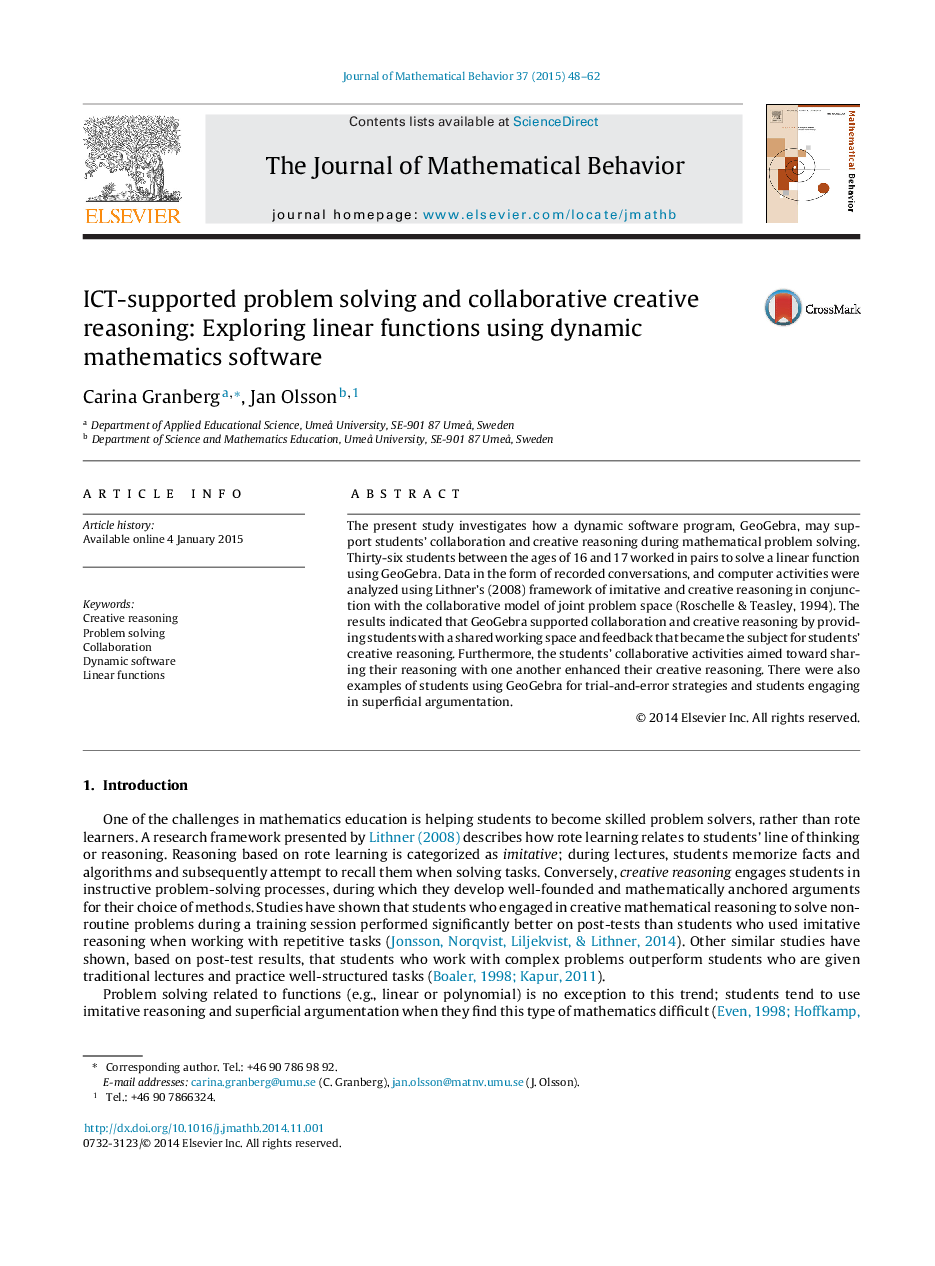| Article ID | Journal | Published Year | Pages | File Type |
|---|---|---|---|---|
| 360595 | The Journal of Mathematical Behavior | 2015 | 15 Pages |
•GeoGebra supported collaboration by providing students with a shared working space.•GeoGebra supported creative reasoning by providing creative feedback.•Students’ way of sharing thoughts enhanced their individual creative reasoning.•There were students who used GeoGebra for trial-and-error strategies.•Teachers supported students to overcome critical situations during problem solving.
The present study investigates how a dynamic software program, GeoGebra, may support students’ collaboration and creative reasoning during mathematical problem solving. Thirty-six students between the ages of 16 and 17 worked in pairs to solve a linear function using GeoGebra. Data in the form of recorded conversations, and computer activities were analyzed using Lithner's (2008) framework of imitative and creative reasoning in conjunction with the collaborative model of joint problem space (Roschelle & Teasley, 1994). The results indicated that GeoGebra supported collaboration and creative reasoning by providing students with a shared working space and feedback that became the subject for students’ creative reasoning. Furthermore, the students’ collaborative activities aimed toward sharing their reasoning with one another enhanced their creative reasoning. There were also examples of students using GeoGebra for trial-and-error strategies and students engaging in superficial argumentation.
